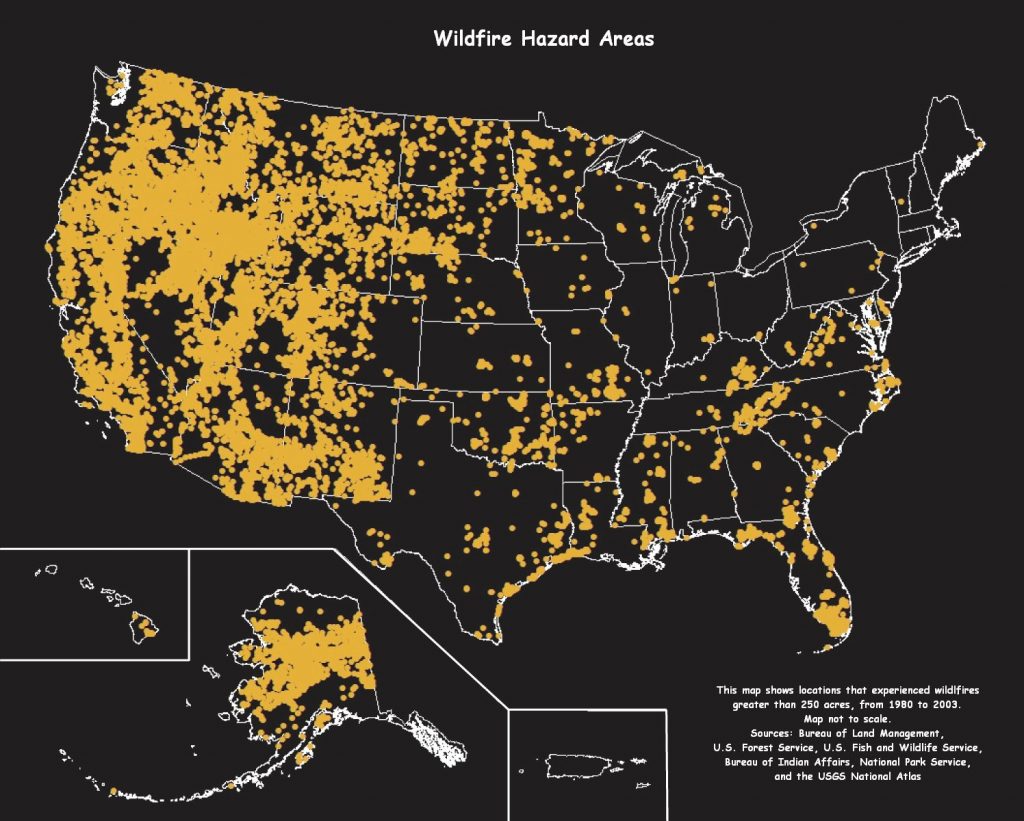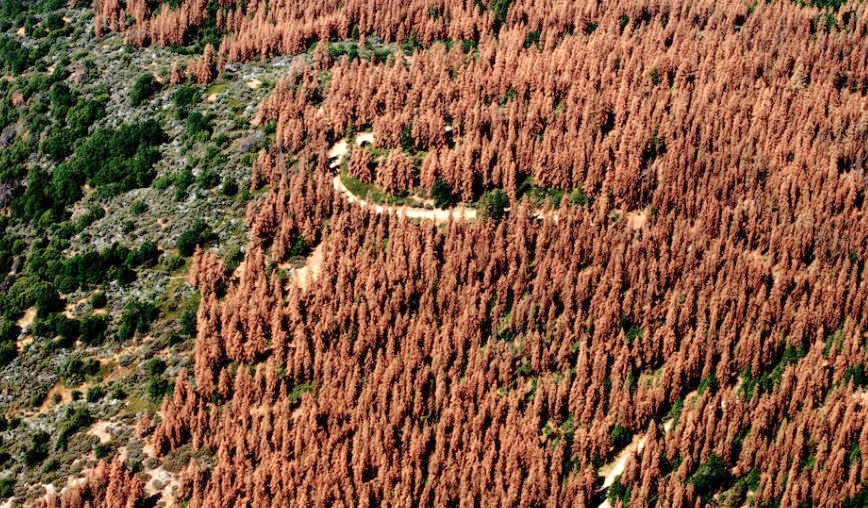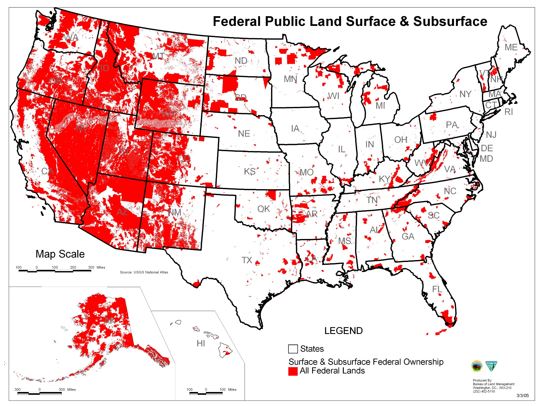If you think forest management is any better, check out the red and green mosaic that covers most of the West. The red is a tinderbox of pine trees killed by the pine bark beetle, ready to ignite with the smallest spark. Hiking behind my home, you will find many trees marked for cutting under a plan by the Forest Service to protect Bozeman’s watershed from disastrous fires that will cost millions of dollars to fight and millions more to restore water quality. However, when I asked a friend at the Forest Service when they would start cutting, he laughed and said the plan will be tied up in court for years by environmentalists who claim the forest is habitat for endangered species such as grizzly bears and lynx. How many bears and lynx will be there when the red and green is replaced by black?
Opinion by Terry Anderson of PERC
In 1962, Congressman Wayne Aspinall wrote to President Kennedy asking him to establish a commission to review public land laws. What resulted two years later was the Public Land Law Review Commission, which later released a report that became the blueprint for public lands legislation including the Federal Land Policy and Management Act and the National Forest Management Act.
On this 40th anniversary of the commission’s report, it is worth reflecting on its impacts. Did the ensuing laws and regulations give us better management of one third of the nation’s land? Do we have the best people with adequate funding using the best science and practicing “adaptive management” through experiments that balance human and environmental values? If you think the answer is yes, take another look at the emperor; he is naked.
For the latest example, consider the recent federal court decision in Montana to relist the wolf as an endangered species. When the Canadian immigrants were brought to Yellowstone in the mid 1990s, they were an “experimental population” that would be delisted if the numbers grew to 30 breeding pairs or 300 wolves. With wolf numbers in the northern Rockies much greater than this—the population in Idaho, Montana, and Wyoming now exceeds 1,700—the U.S. Fish and Wildlife Service asked the three states to development management plans so that canis lupus could be delisted. The service accepted Montana and Idaho’s plans, which included hunting, but rejected Wyoming’s because it went too far in allowing wolves to be shot. Environmental groups centered far from a wolf’s howl filed suit to block the delisting and were successful when Judge Donald Molloy ruled that wolves in the northern Rockies are a single population that cannot be segmented based on political boundaries.
As we continuously see, politics is what federal resource management is all about. Politics dictated wolf reintroduction in the first place, so it is not surprising that politics continues to be the battleground. For example, Defenders of Wildlife, one of the parties to the lawsuit blocking delisting, helped overcome early political opposition from ranchers when it raised private funds to compensate ranchers for livestock losses due to wolf predation. Now Defenders wants wolf populations to continue growing and have the taxpayer foot the bill for compensation. That sounds a lot like politics to me.
Water management is just as bad. Recently, the California State Water Resources Control Board recommended that 75 percent—up from 50 percent—of Central Valley’s water should flow to the Sacramento-San Joaquin Delta to protect the delta smelt and chinook salmon. The ruling prompted Earthjustice attorney Trent Orr to say, “Water officials have made the right call today to fix the Delta by restoring at least minimum water flows to keep nature alive, including our valuable salmon runs. There are a lot of humans that would benefit if the Delta were brought back to health.” There are also a lot of human who will bear the cost of cutting water to agriculture and urban users by 50 percent. It is often said that water flows uphill to money. In this case it gushes uphill to politics.
If you think forest management is any better, check out the red and green mosaic that covers most of the West. The red is a tinderbox of pine trees killed by the pine bark beetle, ready to ignite with the smallest spark. Hiking behind my home, you will find many trees marked for cutting under a plan by the Forest Service to protect Bozeman’s watershed from disastrous fires that will cost millions of dollars to fight and millions more to restore water quality. However, when I asked a friend at the Forest Service when they would start cutting, he laughed and said the plan will be tied up in court for years by environmentalists who claim the forest is habitat for endangered species such as grizzly bears and lynx. How many bears and lynx will be there when the red and green is replaced by black?
A recent PERC study—“Two Forests Under the Big Sky”—contrasts federal and tribal forest management. In that study, Alison Berry shows that the Confederated Salish and Kootenai Tribes manage their land better, in part, because they are not subject to the same environmental laws as the U.S. Forest Service—laws emanating from that commission four decades ago.
Federal land management is a sham. As Jack Ward Thomas, former chief of the Forest Service, puts it, federal land management is tied in a “Gordian knot.” That knot is the result of laws and regulations that allow for environmental litigation at every turn. Berry pointed out that in 2007, more than 21 million board feet were held up in appeals and litigation on the Lolo. Federal resource management legislation may look like science in sheep’s clothing, but the fact is that it is politics in wolf’s clothing.
Terry Anderson
Property & Environment Research Center


 Free Range Report
Free Range Report


Forest Fires are the antithesis of conservation. It’s like burning money. The Forest Service needs to hire people who actually know something about trees, lumbering, and ways to efficiently use local people to help in the collection of dead wood clean up. Cattle grazing on grass also prevents potential fires. It’s a synergistic, win-win situation when all avenues are used to keep forests healthy.